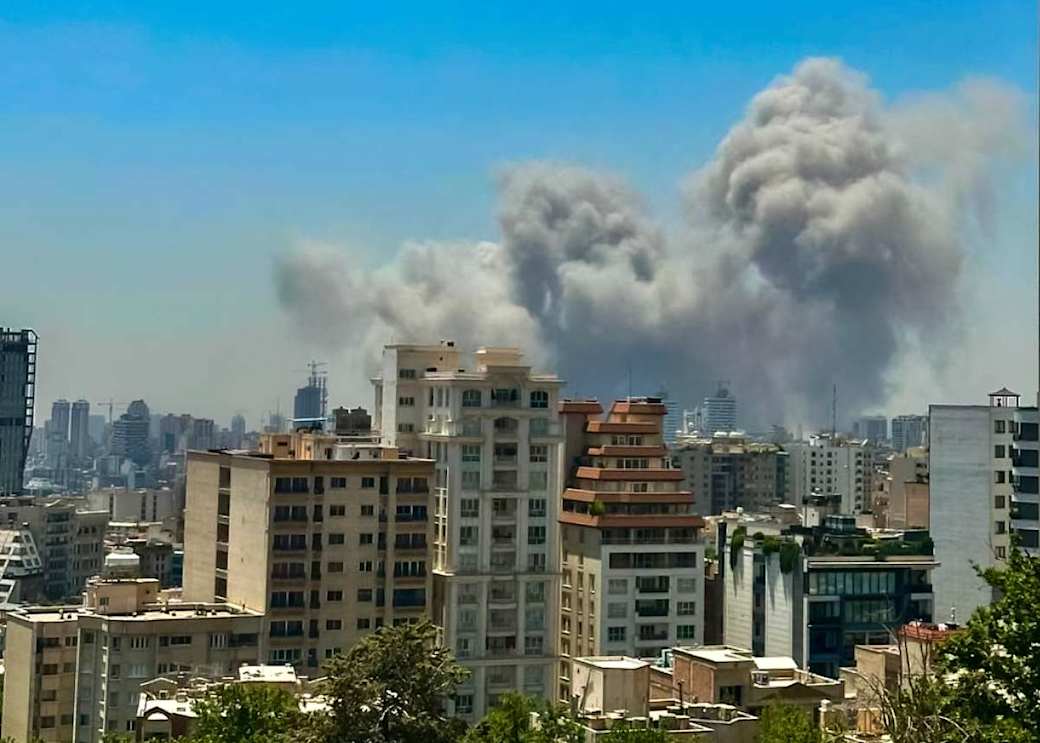Israel Targets Fordo Access Routes and Tehran Sites
Israel launched a series of airstrikes early Monday targeting Iran’s heavily fortified Fordo nuclear enrichment facility and multiple sites across Tehran, including military and governmental infrastructure, in a dramatic escalation of the ongoing conflict between the two nations. The attacks, part of Israel’s “Operation Rising Lion,” aim to cripple Iran’s nuclear program and weaken its military capabilities, Israeli officials said.
Strikes on Fordo and Tehran
The Israel Defense Forces (IDF) confirmed strikes on the Fordo Fuel Enrichment Plant near Qom, a subterranean facility buried deep under a mountain, which has long been central to Iran’s uranium enrichment efforts. The IDF also reported hitting Tehran’s Defense Ministry headquarters, an oil depot, and Evin Prison, notorious for housing political dissidents. “Our air force targeted military infrastructure in Tehran and western Iran to disrupt Iran’s nuclear ambitions and missile capabilities,” the IDF stated on X.
Satellite imagery from Maxar Technologies showed six craters near Fordo’s entry points, suggesting significant damage, though Iran claimed the site was “not impacted.” The International Atomic Energy Agency (IAEA) Director General Rafael Grossi confirmed strikes on Fordo, Natanz, and Isfahan but noted no radiological leaks, urging restraint to protect nuclear facilities.
In Tehran, explosions rocked residential neighborhoods, including Hakimiyeh and Tehranpars, and Mehrabad airport, which houses an air force base. Iranian state media reported damage to a building at the Defense Ministry and a fire at the Shahran oil depot, though the oil ministry claimed operations were unaffected.
Iran’s Retaliation and Casualties
Iran responded with a barrage of ballistic missiles targeting Tel Aviv, Jerusalem, and Haifa, killing at least four civilians and injuring dozens, according to Israel’s Magen David Adom emergency service. The IDF’s Iron Dome intercepted many missiles, but buildings in Bat Yam and Rishon LeZion were damaged. Iran’s Supreme Leader Ayatollah Ali Khamenei vowed a “harsh punishment,” calling the strikes a “declaration of war.”
Iranian authorities reported over 400 deaths since Israel’s campaign began on June 13, mostly civilians, with 78 killed in Friday’s strikes alone, including top military commanders like IRGC chief Hossein Salami. Israel claims it eliminated 90% of Iran’s top nuclear scientists and several senior officers, dealing a blow to Tehran’s leadership.
U.S. Involvement and Global Reactions
The U.S., which struck Fordo, Natanz, and Isfahan on Saturday using B-2 bombers and GBU-57 “bunker buster” bombs, described the operation as a “spectacular military success.” President Donald Trump claimed the strikes “obliterated” Iran’s nuclear capabilities, urging Tehran to negotiate or face further attacks. Iran, however, launched missiles at the U.S. Al Udeid airbase in Qatar on Monday, though no casualties were reported.
Russia and China condemned the U.S. and Israeli actions, with President Vladimir Putin pledging support for Iran. European leaders, including UK Foreign Secretary David Lammy, called for de-escalation and a return to diplomacy, warning that Iran must not acquire nuclear weapons. The UN Security Council is holding emergency talks, with fears of a wider conflict mounting.
Oil prices fluctuated, dropping 4% on Monday despite Iran’s threats to close the Strait of Hormuz, a critical oil chokepoint. Analysts suggest markets doubt Iran will disrupt global supplies, but the risk remains high.
Strategic Implications
Israeli Prime Minister Benjamin Netanyahu described the strikes as essential to “roll back the Iranian threat to Israel’s survival,” claiming Iran was weeks from a nuclear breakout. However, experts like Sima Shine, a former Mossad official, cautioned that Iran may have hidden enriched uranium elsewhere, potentially allowing it to pursue a bomb in secret.
Iran’s Foreign Minister Abbas Araghchi, meeting with Putin in Moscow, ruled out nuclear talks while under attack, accusing the U.S. of complicity. Tehran’s parliament approved a motion to close the Strait of Hormuz, though no immediate action was taken.
A Region on the Brink
As Tehran’s 10 million residents flee amid relentless bombardment, and Israel remains under a state of emergency, the conflict shows no signs of abating. Protests in Iran and anti-war demonstrations in U.S. cities reflect growing unease. With both sides trading missile volleys and global powers divided, the risk of a broader war looms large.
“This is a pivotal moment,” said Dr. Ali Vaez of the International Crisis Group. “The strikes may have disrupted Iran’s nuclear program, but they’ve also pushed the region closer to an all-out conflict.” As the world awaits Iran’s next move, the delicate balance between diplomacy and military action hangs in the balance.
